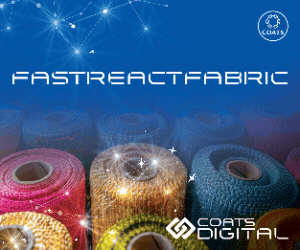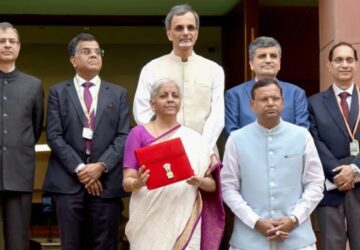
With consumers becoming more conscious of their ecological footprint, sustainable fashion is gaining more mainstream recognition. It is no longer just a trend; it is a way of life that has the potential to bring about transformative environmental impact. This has also led to a paradigm shift in the textile industry, which has made significant strides in revamping its production methods and incorporating sustainable practices to meet the demands of mindful shoppers.
The fashion and textile industry, like any other, is striving to reduce its impact on the environment by decreasing carbon emissions, waste production, and water usage. According to the UNEP and the Ellen MacArthur Foundation, the industry is responsible for 10% of global carbon emissions and 20% of global water waste. However, the industry is dedicated to pursuing sustainability, with a commitment to a sustainable future. It has embraced sustainable fashion trends and made the green revolution its core value.
Focused on the three E’s– Equity, Environment, and Economics- sustainable fashion is a movement that seeks to minimize the negative impact of the fashion industry on the environment and society. It prioritizes environmentally responsible practices throughout the entire supply chain, including the design, production, and consumption of clothing and accessories. From the sourcing of raw materials to discarding clothes, transparency, ethical practices, and waste reduction are emphasized at every stage. Furthermore, sustainable fashion advocates for fair labour practices that ensure safe and healthy working conditions, as well as equitable pay for all workers.
In the textile industry, the use of compostable raw materials in fabric production is one of the most prominent approaches to sustainability. Companies are transitioning to organic cotton, hemp, bamboo, and recycled polyester to reduce their carbon footprint. This shift to eco-friendly materials coupled with circular fashion practices and designing for longevity is helping to establish a responsible and sustainable ecosystem.
To achieve this goal, the Ministry of Textiles also recently initiated an agreement between the United Nations Environment Programme and The Cotton Corporation of India to promote sustainability in the supply chain. This agreement emphasizes mainstreaming sustainability and circularity in the country’s textile sector.
Another way the textile industry is incorporating sustainability into its practices is by implementing safe dyeing methods and reducing waste throughout the supply chain. Manufacturers are taking steps to minimize the impact of unsold clothing items through recycling, reuse, and reduction initiatives as well as exploring the use of natural dyes to combat the environmental burden. Toxic synthetic dyes used for colouring and finishing are responsible for 17 to 20 percent of current water pollution, according to data from the World Bank. By taking measures to control this, water pollution can be reduced positively, impacting the preservation of the aquatic ecosystem.
To address wastewater-related issues, the textile industry has implemented Effluent Treatment Plants (ETP). One effective solution to manage industrial pollution is the implementation of Zero Liquid Discharge (ZLD), an advanced wastewater treatment process that eliminates all liquid discharge from a system.
In addition to these solutions, there are ongoing initiatives to transform PET bottles into recycled polyester fibres and recycle plastic for packaging. Brands are also incorporating innovative sustainable technologies such as 3D printing and artificial intelligence, which enable them to produce creative and innovative solutions.
However, sustainability is a broad concept and companies often face numerous challenges when attempting to align their operational structure with sustainable standards. Limited knowledge, lack of set guidelines, a complex supply chain network and the involvement of various stakeholders make it difficult to work in the best interest of the planet. The rising issue of greenwashing makes the situation even worse for those trying to implement the sustainable practice in their working model. Certain brands resort to using terms such as “eco-friendly” and “environmentally friendly” to promote their products, even if they fail to comply with sustainability standards. Thus, sustainability measures require the active participation of all contributors and a transparent system for tracing progress made in the direction.
To achieve sustainable development goals and create an environmentally conscious future, it is requisite to address the challenges associated with it. Over the decades, the textile industry has made significant progress in the direction of introducing eco-friendly materials, circular fashion, and advanced wastewater treatment processes, but a lot more needs to meet the sustainable needs of the generations to come.
For this, the continual support of the consumer and other stakeholders is essential. The transition to sustainable business practices will allow consumers to enjoy high-quality clothing while being environmentally mindful. On the other hand, it will encourage brands to enhance their creativity and implement sustainable practices throughout their operations. With the sustainable fashion market expected to reach $9.81 bn by 2025, more sustainable, and aesthetically pleasing fashion can be expected in the future. Working together can benefit the planet and society.

















